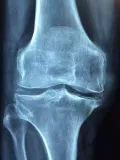Ovarian cancer is the fifth most common invasive gynecologic cancer and the fifth leading cause of death from gynecologic cancer in the United States. The American Cancer Society estimates that in 2018, approximately 22,440 new cases of ovarian cancer will be diagnosed and approximately 14,000 women will die from this disease. This article will provide you with information on this deadly disease and its risk factors, symptoms, diagnosis, treatment options, and survivorship.
What is ovarian cancer?
Ovarian cancer is a malignant tumor that starts in the ovaries. The ovaries are the organs in women that produce eggs, and they also secrete hormones that regulate the menstrual cycle and other aspects of female health. Ovarian cancers are often diagnosed when they are at an advanced stage, and the prognosis is generally poor. Some ovarian cancers can be treated effectively, but many women do not receive a diagnosis until the disease has already spread to other parts of the body. Early detection and treatment are essential for survival, but unfortunately, ovarian cancer is often diagnosed at a late stage.
Risk factors for ovarian cancer
- Age - Most ovarian cancers occur in women over 50. - Race - Black women are more likely to develop this cancer than women of other races. - Family history - Women with a family history of ovarian cancer (hereditary ovarian cancer) have an increased risk of developing the disease.
- Contraceptive use - Women who have taken long-term hormone-releasing oral contraceptives have an increased risk of developing ovarian cancer.
- Obesity - Research shows a connection between obesity and the risk of ovarian cancer.
- Certain invasive gynecologic procedures - Procedures that involve the insertion of a device, such as a laparoscopy, into the abdominal cavity to examine the pelvic organs are associated with a small increased risk of ovarian cancer.
- Infertility treatments - Women who take progesterone as part of treatment for infertility have a small increased risk of developing ovarian cancer.
- Hormone therapy - Postmenopausal women who take hormone therapy to treat menopausal symptoms have an increased risk of developing ovarian cancer.
- Type of menopause - Menopause that occurs naturally (due to the aging process) is not associated with an increased risk.
Symptoms of ovarian cancer
If left untreated, ovarian cancer can progress and spread to other parts of the body. When ovarian cancer spreads to other organs, it is often too advanced to be treated effectively. The most common symptoms of ovarian cancer are abdominal bloating, weight gain, vaginal bleeding (including postmenopausal bleeding), urinary urgency (the need to urinate often or feeling that you have to urinate immediately), pain in the lower back or abdominal area, and changes in bowel habits (such as diarrhea or constipation). Women who have one or more of these symptoms should see their doctor as soon as possible.
Diagnosis of ovarian cancer
The most common procedure done to diagnose ovarian cancer is a laparoscopy, in which a doctor examines the abdominal cavity and ovaries with a small device inserted through a small incision in the abdomen. In addition, blood tests can be done to look for certain proteins produced by ovarian cancer cells, and imaging tests of the abdominal cavity such as CT scans and MRIs can be used to identify tumors.
Treatment Options for Ovarian Cancer
Treatment is based on the extent of the disease at the time of diagnosis. Surgery often is the first step in treating ovarian cancer, followed by chemotherapy and/or radiation therapy. Other treatments include targeted therapy, immunotherapy, or a combination of these treatments. Some women also take herbal or dietary supplements or undergo alternative treatments such as acupuncture and yoga.
Survivorship care plan for ovarian cancer
After treatment, it is important to follow-up regularly with a health care provider, get a yearly gynecologic exam, and perform monthly self-exams to reduce the risk of recurrence. You can also learn about ways to reduce your risk for ovarian cancer by making healthy lifestyle choices. $$$ Conclusion $$$ Cancer is scary, and ovarian cancer is particularly frightening because it often goes undetected until it is advanced. Fortunately, ovarian cancer can be detected early with frequent screenings and self-exams. By making healthy lifestyle choices, you can reduce your risk of developing this disease. If you are at an average risk of ovarian cancer, you should have a pelvic exam and blood test every year. If you are at high risk, you should have these tests every 6 months. If you are at high risk because you have a family history of this disease, you should have these tests every 3 to 6 months.


 Video Chat Before you Meet Up in Person
Video Chat Before you Meet Up in Person
 Help with the Ability of Emotional Intelligence
Help with the Ability of Emotional Intelligence
 Understanding Gestational Diabetes: Causes, Symptoms, and Treatment
Understanding Gestational Diabetes: Causes, Symptoms, and Treatment Woman's Health Concerns and Osteoporosis
Woman's Health Concerns and Osteoporosis